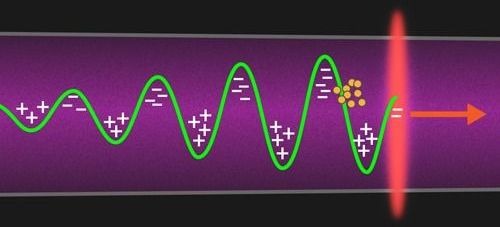A method for accelerating particles, called wakefield acceleration, has notched up its output energy, bringing it closer to its goal of shrinking the size of accelerator facilities.
The field of plasma wakefield acceleration is picking up speed. This method, which was first proposed in 1979 [1], creates a collective motion of plasma particles, generating an accelerating field in its wake. The amplitude of this accelerating field is not limited, as it is in conventional acceleration techniques that use radio frequency pulses. The implication is that wakefield acceleration has the potential to work over much smaller lengths, which would allow a reduction in the size (and cost) of accelerator facilities. There exist different methods for generating wakefields, and now researchers are reporting significant progress for two of these techniques. One method using laser-driven wakefields has generated 8-GeV electrons, a new energy record that doubles the previous record [2].










Comments are closed.